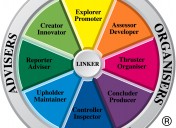Learning Vs. Training
 Many people in business confuse learning with training, which can create some confusion when it comes to deciding the appropriate methods to solve performance problems.
Many people in business confuse learning with training, which can create some confusion when it comes to deciding the appropriate methods to solve performance problems.
What’s the difference between training and learning?
Training transfers knowledge, skills, and experiences to others. Training is something you do. Learning, on the other hand, refers to the ability to acquire, modify, reinforce, and process different experiences and knowledge. It is something you experience that creates changes of behaviour.
Too often businesses implement training solutions without considering the behaviours they want to activate, and similarly, the right behaviours require the right conditions, environment, context, and management support to enable learning to occur within the workplace.
How do you choose the right solution for your challenge?
There are many vendors who provide a mindboggling array of training solutions, including facilitator-led, synchronous and asynchronous e-learning, virtual collaborative learning, mobile learning, and performance support tools, of which you can structure into formal and informal learning activities within your own business context.
The ultimate goal in creating a blended program is to ensure that learning occurs beyond a training event and engages your people in future learning and work scenarios.
Here are some delivery mechanisms you can use to encourage everyday learning after your training event:
- Synchronous eLearning – involves the facilitator and participants interacting in real time. This can be done using online using virtual collaboration software, such as chat, instant messaging, editing, or annotation tools. The benefits of this type of online learning are that it happens in real time at the participant’s own home or office, and the sessions can be recorded so that they can be reviewed at a later time
- Asynchronous eLearning – involves participants completing an online learning program ‘on demand’ when they need it most. Some examples of asynchronous eLearning include traditional e-learning programs that you may have seen used for mandatory compliance training, community discussion boards, and more recently, social networking platforms, such as Yammer
- Mobile Learning – involves delivering and accessing learning from mobile technology when your participants need it most— ‘just in time’ and ‘on demand’ learning that is self-directed and self-paced
- Incorporated Social Learning– participants can model behaviours and learn from peers within different communities, such as communities of practice or other social networks
Why not blend all of the above? – Creating a blend of all these techniques offers the best results for students.
Unfortunately, there isn’t a ‘one-size-fits-all’ solution to meeting learning challenges in the workpalce. The right solution depends on many factors, such as your budget, the tools, resources, and systems you have available, and the skill levels of both your facilitators and participants.
Contributor – Helen, Ancora Learning Social Learning Specialist
Helen is a skilled workplace learning and development and social collaboration consultant. With a specialty in digital networked learning, Helen has a passion for enabling people to learn beyond the classroom using social and virtual collaboration tools and technology which places learning within the flow of the work. She believes in the power of networks and communities to drive collaboration, engagement and meaning to work. She is passionate about helping teams discover how digital tools can be used to enable them to learn, work, share and collaborate which are critical new skill sets in future networked and responsive organisations.
To identify the right solution for your performance and skill gaps according to your needs and budget
Call 1300 ANCORA (262672)


















